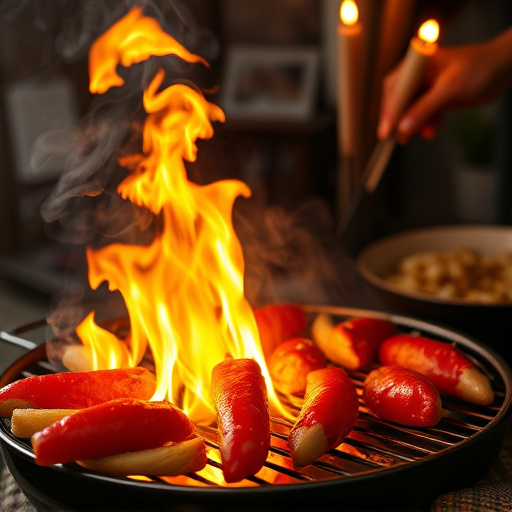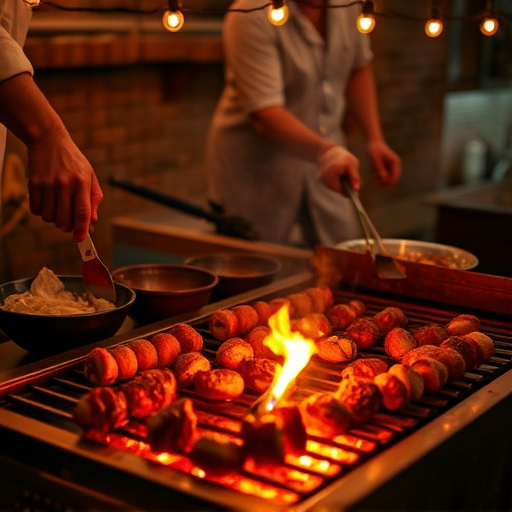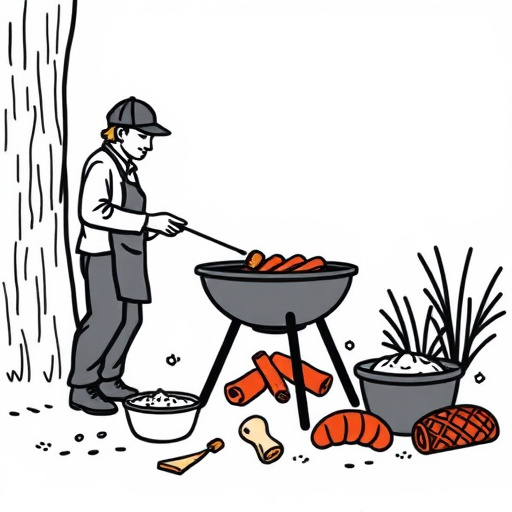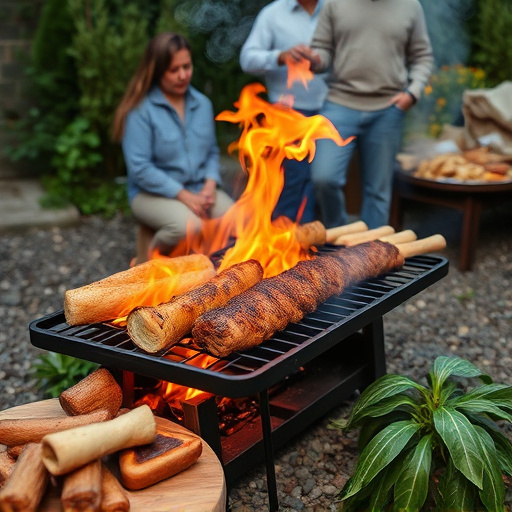Grilling perfect BBQ ribs involves understanding rib types (baby back vs. spare) and choosing aged, meaty cuts with visible marbling. Seasoning is key – try a dry rub blend of salt, pepper, paprika, garlic powder, and brown sugar. Master grilling techniques: smoking for slow, tender ribs or direct high-heat grilling for quicker results. Experiment to find your ideal method and create the ultimate BBQ ribs recipe tailored to your grill.
Looking to perfect your BBQ ribs recipe? Grilling the ultimate ribs is an art, and selecting the right cut is crucial. This comprehensive guide takes you through understanding rib types, choosing quality meat, and mastering seasoning techniques for that mouthwatering flavor. We’ll also explore various cooking methods, from smoking to grilling, to ensure your ribs are cooked to perfection every time. Discover expert tips for achieving tender, juicy, and deliciously seasoned BBQ ribs on the grill.
- Understanding Rib Types for Grilling: A Comprehensive Guide
- Choosing the Right Cut: What to Look For in Quality Ribs
- Seasoning and Preparation Techniques for Optimal Flavor
- Cooking Methods: Mastering the Art of Smoking and Grilling Ribs to Perfection
Understanding Rib Types for Grilling: A Comprehensive Guide

When it comes to grilling perfect BBQ ribs, understanding the various types available is key. Ribs can be broadly categorized into two main groups: baby back and spare ribs. Each has distinct characteristics that affect cooking time, tenderness, and flavor. Baby back ribs, taken from the top of the ribcage, are known for their smaller size and shorter bone structure. This makes them easier to cook through faster and they tend to stay moist during the grilling process. They’re ideal for those who prefer a quicker cooking time without sacrificing too much on flavor.
Spare ribs, or St. Louis-style ribs, come from the belly of the pig and are characterized by their large, meaty portions and longer bones. These ribs require a bit more patience due to their thicker cut, but they offer an intense BBQ experience with rich, smoky flavors. The longer cooking time allows for deeper caramelization of the natural sugars in the meat, resulting in a mouthwatering, tender texture that’s perfect for slow-and-steady grilling methods. Whether you’re going for a quicker baby back rib recipe or willing to invest more time in spare ribs, understanding these types will help ensure your grill session ends with delicious, satisfying results.
Choosing the Right Cut: What to Look For in Quality Ribs

When selecting ribs for grilling, understanding the different cuts is key to achieving tender, flavorful results in your BBQ ribs recipe. Look for ribs that are meaty with visible marbling – this means layers of fat interwoven throughout the muscle tissue. The cut should be a blend of bone-in and bone-out sections, offering both rich flavor from the marrow and easier handling at the grill. Avoid overly lean cuts or those where most of the meat is separated from the bone; these can dry out during cooking.
Opt for ribs with a thick membrane on the bone side – this tough layer will render down and become crispy when cooked properly, adding depth of flavor to your bbq ribs recipe. The quality of the rib should be uniform throughout, without any large gaps or thin spots. A rich, ruby-red color indicates freshness, while a slightly smoky aroma hints at the potential for delicious grilled flavors. Choose ribs that are aged appropriately – a good rule of thumb is three to five days post butchering – as this allows the flavors to develop and mellow out.
Seasoning and Preparation Techniques for Optimal Flavor

When it comes to grilling the perfect BBQ ribs, seasoning and preparation are key to unlocking that mouthwatering flavor. Start by applying a generous coat of your favorite dry rub; this blend of spices not only adds heat but also penetrates the meat, infusing each bite with a complex array of flavors. A good BBQ rib recipe often includes a combination of salt, pepper, paprika, garlic powder, and brown sugar for that sweet and savory kick.
Before hitting the grill, let the ribs come to room temperature—this ensures even cooking. Consider soaking them in a marinade or sauce for an extra burst of flavor, though be mindful not to over-marinate, as this can make the ribs tender too quickly. Pat the ribs dry afterward; a dry surface promotes better browning and caramelization, resulting in a richer taste experience.
Cooking Methods: Mastering the Art of Smoking and Grilling Ribs to Perfection

When it comes to grilling perfect BBQ ribs, understanding different cooking methods is key. Smoking and grilling are both time-honored techniques that transform ordinary ribs into mouthwatering delights. Smoking involves slow-cooking ribs in a low-temperature environment with indirect heat and smoke, infusing them with intense flavor. This method requires patience as it can take several hours, but the result is tender, succulent ribs that melt in your mouth.
On the other hand, grilling focuses on direct, high-heat cooking, searing the surface of the ribs to create a crispy exterior while locking in juicy goodness inside. For an authentic BBQ experience, many prefer smoking as it adds a complex, smoky taste that’s hard to replicate otherwise. However, grilling offers quicker results and a distinct flavor profile, making it a popular choice for those who want delicious ribs in a shorter amount of time. Experimenting with these techniques will help you discover your preferred method and create the perfect BBQ ribs recipe tailored to your grill.
